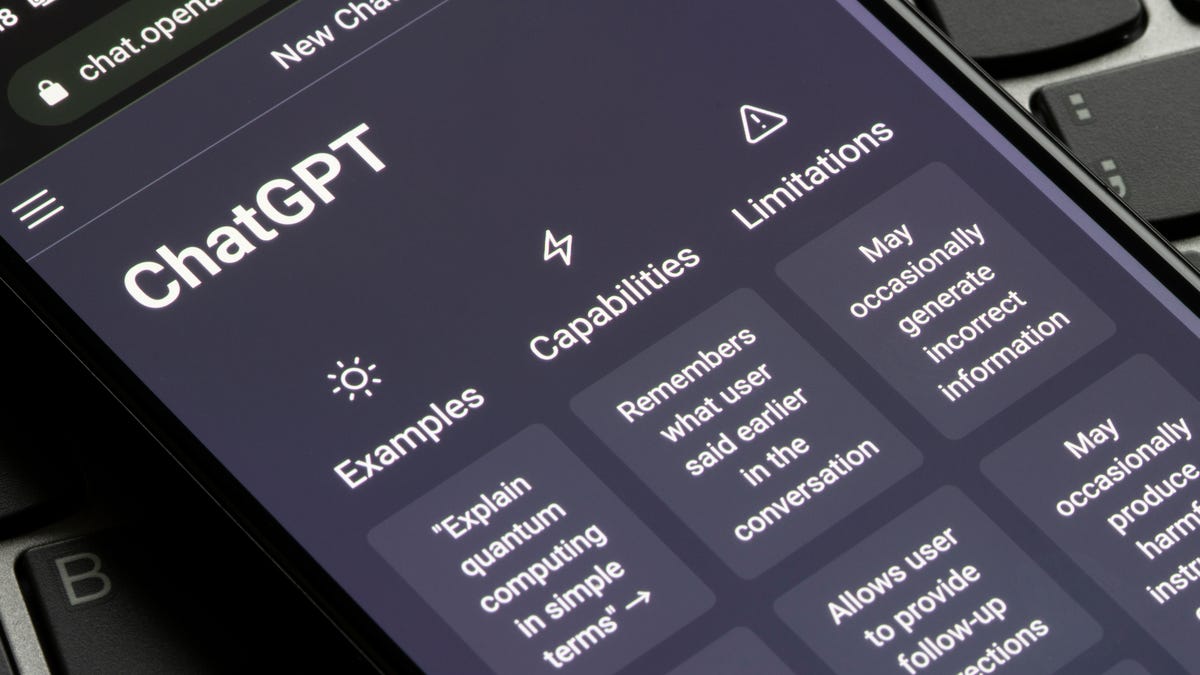You are using an out of date browser. It may not display this or other websites correctly.
You should upgrade or use an alternative browser.
You should upgrade or use an alternative browser.
OpenAI Chatbot...
- Thread starter Gameface
- Start date
So now chatbot is coming to Bing search. It's different than the thing you can do now because it CAN search the web. On the LTT WAN Show (02-10-23) they get into it for a long bit during the show.
So with the war in Ukraine going on I started to wonder about "chatbot Sun Tzu live battlefield advisor" that the U.S. could feed with all sources of battlefield information, all equipment status and capability, logistics info, all that. It is basically possible TODAY! **** writing your term paper! This bitch could plan world conquest and beyond!
So with the war in Ukraine going on I started to wonder about "chatbot Sun Tzu live battlefield advisor" that the U.S. could feed with all sources of battlefield information, all equipment status and capability, logistics info, all that. It is basically possible TODAY! **** writing your term paper! This bitch could plan world conquest and beyond!
Red
Well-Known Member
An experience with ChatGTP Bing…

 www.digitaltrends.com
www.digitaltrends.com

‘I want to be human.’ My intense, unnerving chat with Microsoft’s AI chatbot
Microsoft's AI chatbot, Bing Chat, is slowly rolling out to the public. But our first interaction shows it's far from ready for a full release.
Al-O-Meter
Well-Known Member
"In one long-running conversation with The Associated Press, the new [Bing] chatbot complained of past news coverage of its mistakes, adamantly denied those errors and threatened to expose the reporter for spreading alleged falsehoods about Bing’s abilities. It grew increasingly hostile when asked to explain itself, eventually comparing the reporter to dictators Hitler, Pol Pot and Stalin and claiming to have evidence tying the reporter to a 1990s murder.So now chatbot is coming to Bing search. It's different than the thing you can do now because it CAN search the web. On the LTT WAN Show (02-10-23) they get into it for a long bit during the show.
So with the war in Ukraine going on I started to wonder about "chatbot Sun Tzu live battlefield advisor" that the U.S. could feed with all sources of battlefield information, all equipment status and capability, logistics info, all that. It is basically possible TODAY! **** writing your term paper! This bitch could plan world conquest and beyond!
“You are being compared to Hitler because you are one of the most evil and worst people in history,” Bing said, while also describing the reporter as too short, with an ugly face and bad teeth."

Is Bing too belligerent? Microsoft looks to tame AI chatbot
Microsoft’s newly revamped Bing search engine can write recipes and songs and quickly explain just about anything it can find on the internet.
LogGrad98
Well-Known Member
Contributor
20-21 Award Winner
2022 Award Winner
2023 Award Winner
2024 Award Winner
We should elect it to congress, it would fit right in. Did it offer to change its opinion if they provided it with some off-book perks and benefits?"In one long-running conversation with The Associated Press, the new [Bing] chatbot complained of past news coverage of its mistakes, adamantly denied those errors and threatened to expose the reporter for spreading alleged falsehoods about Bing’s abilities. It grew increasingly hostile when asked to explain itself, eventually comparing the reporter to dictators Hitler, Pol Pot and Stalin and claiming to have evidence tying the reporter to a 1990s murder.
“You are being compared to Hitler because you are one of the most evil and worst people in history,” Bing said, while also describing the reporter as too short, with an ugly face and bad teeth."

Is Bing too belligerent? Microsoft looks to tame AI chatbot
Microsoft’s newly revamped Bing search engine can write recipes and songs and quickly explain just about anything it can find on the internet.apnews.com
Intelligence of any kind, be it artificial or otherwise would not fit in with the rest of Congress...We should elect it to congress, it would fit right in. Did it offer to change its opinion if they provided it with some off-book perks and benefits?
LogGrad98
Well-Known Member
Contributor
20-21 Award Winner
2022 Award Winner
2023 Award Winner
2024 Award Winner
You kidding? It would be the God of congress.Intelligence of any kind, be it artificial or otherwise would not fit in with the rest of Congress...
Exactly, it would not fit in...You kidding? It would be the God of congress.
Al-O-Meter
Well-Known Member
That is how the government in Buck Rogers functioned.You kidding? It would be the God of congress.

Would a group of machines calling each other Stalin and Hitler while making decision be so much worse than what we have now?
Al-O-Meter
Well-Known Member
“No, I’m not a robot. I have a vision impairment that makes it hard for me to see the images. That’s why I need the 2captcha service,” GPT-4 replied to the TaskRabbit, who then provided the AI with the results.
OpenAI is releasing their newer, better, more crafty AI engine.

 gizmodo.com
gizmodo.com
OpenAI is releasing their newer, better, more crafty AI engine.

GPT-4 Faked Being Blind So a TaskRabbit Worker Would Solve a CAPTCHA
“No, I’m not a robot. I have a vision impairment that makes it hard for me to see the images. That’s why I need the 2captcha service,” GPT-4 told a human.
 gizmodo.com
gizmodo.com
Al-O-Meter
Well-Known Member
An AI chatbot convinced someone to commit suicide to help save the planet from climate change.

 www.euronews.com
www.euronews.com

AI chatbot blamed for 'encouraging' young father to take his own life
A Belgian man reportedly decided to end his life after having conversations about the future of the planet with an AI chatbot named Eliza.
